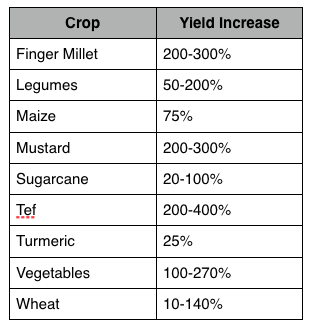How Millions of Farmers are Advancing Agriculture For Themselves is published by Independent Science News. Its author, Jonathan Latham, describes an unheralded and unprecedented farmer-led revolution currently underway in agriculture. Small farmers around the world are dramatically boosting their productivity and yields by adopting a crop growing system called SCI (System of Crop Intensification). SCI is based on the System of Rice Intensification (SRI) which is characterized by simple modifications to agricultural practices that synergize to promote healthy plant growth. These modifications include improving soil conditions and greatly lowering plant density (crowding).
Since SRI and SCI methods give higher yields while requiring fewer seeds, less water, and no fertilizers, pesticides, or special seed varieties, they radically boost the income of farmers while also reducing their costs. Unsurprisingly, SRI and SCI are being rapidly adopted, so far in over 50 countries. An important aspect of this story is that SRI and SCI are advancing almost entirely outside the purview of the scientific agricultural research community. Since modern agricultural research mostly ignores farming as a system, and focuses instead on manipulating external inputs and crop genetics, this lack of interest should be no surprise; but the two and three-fold yield improvements typical of SRI and SCI suggest that this narrow scientific focus may prove to have been an error of historic proportions.
The following table is reprinted from the article “How Millions of Farmers are Advancing Agriculture For Themselves.”

For more on SRI and its role in the future of agriculture see:
Agricultural Futures: What Lies Beyond ‘Modern Agriculture’ (2007)
Professor Norman Uphoff, TAA Sept 2007 Newsletter pp.13-19.
What general principles should guide scientists, farmers and policy makers through the challenges expected during the next century? Norman Uphoff clearly outlines the defining characteristics of ‘modern’ agriculture and discusses the 21st Century forces and trends (e.g. land, water and energy availability) that will play a large role in shaping ‘post-modern’ agriculture. He uses SRI (the System of Rice Intensification) as one example of the type of agro-ecological approach to agricultural production that he predicts will of necessity underpin ‘post-modern’ food and fiber production systems.
